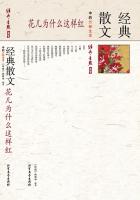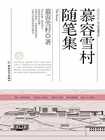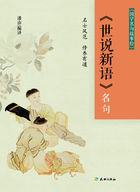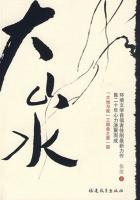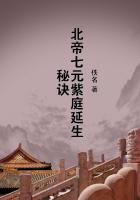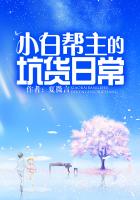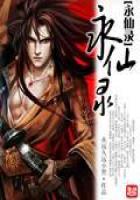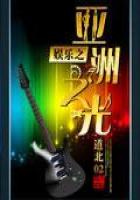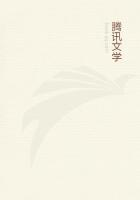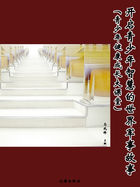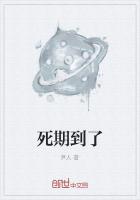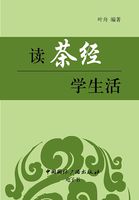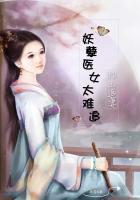Learning Is a Necessity in One’s Life
任何人刚出生时都不知道该如何继续活下去。为了生存,人人都不得不学习——学习如何吃奶或用奶瓶喝牛奶,学习如何爬和走,学习如何表达自己,学习如何读书写字,学习如何谋生,学习如何为人处世等等。如果人出生后都不学习,又怎能活下去呢?
Anyone who is just born does not know how to live on. In order to live, everyone has to learn—learn howto suck at one’s mother’s breast or how to suck milk through a nipple of a feeding bottle, learn how to crawand walk, learn how to express oneself, learn how to read and write, learn how to make a living, learn how todeal with other people, and so on. If anyone does not learn after his or her birth, how can he or she live on?
咱们去读一读吴承恩的《西游记》吧!我们就能看到作者及其主要人物终生是如何学习的。
Let’s read Wu Cheng’en’s Journey to the West! We can see how the writer and his main characters havebeen learning all their lives.
1.1 内容介绍
1.1 Introduction
正如一些世界文学名着,像德国歌德的《浮士德》一样,《西游记》是在长期广为流传的故事基础上发展并创作而成的。《西游记》的故事来源于唐朝贞观时期一个名叫玄奘(602—664)的佛教高僧独自一人西行,经过中亚到天竺(今天的印度)去求法取经的历史真实事件。玄奘西行,往返数千英里,历时17年,穿越了当时的138个国家,无论在佛教文化史上,还是在中印文化交流史上,都写下了光辉的一页。各种关于玄奘求法取经的故事很快在人民大众中传诵,并且随着时间的流逝,这些故事越传越广,神秘色彩越变越浓。玄奘的事迹本身就具有传奇色彩,后来被人们进一步夸张渲染,越传越奇,逐渐从佛教故事演变成文学小说。
Just like some classics in the world literature, such as Faust by German writer J.W Goethe, Journey tothe West is developed and created on the basis of some stories spread far and wide for a long time. Its storiescame from a historic event that a Buddhist monk named Xuanzang (602—664) traveled alone through CentralAsia to the land of Tianzhu (present-day India) to seek the original Buddhist ures in the Zhenguanperiod of the Tang Dynasty. Xuanzang’s journey to the West and back covered thousands of miles, took 17years, and he traversed 138 states, writing a brilliant page not only in the history of Buddhist culture but alsoin the history of Sino-Indian cultural exchanges. All kinds of stories about Xuanzang’s quest for the uressoon circulated among the people, or with the passage of time and the gradual geographical spread of thesestories, they acquired a more and more mystical coloring. Xuanzang’s adventures, which were made moreadventurous through hyperboles or exaggerations in the succeeding generations, gradually developed from theBuddhist’s stories into a novel of literature.
很多有关玄奘求法取经的故事都是在广大人民群众中口头流传的,无法找到任何文字记载。在尚存的南宋时期(13世纪左右)印刷的说书人的说书底本《大唐三藏取经诗话》中,猴行者作为玄奘的陪伴和护送人出现在如“花果山、杀死白虎精、驱逐馗龙、征服深沙神、偷吃蟠桃”等事件中。尽管说书人的底本塑造的人物有些粗糙,没有想象力,但猴行者从此成了西游故事框架中永久的固定人物。深沙神也是沙僧的早期形象。
Many stories about Xuanzang’s quest for the ures were orally circulated among the people andcould not be found any record of written form. In an extant printed storyteller’s prompt book (printed in thethirteenth century or thereabouts) of the Southern Song, titled The Tale of How Sanzang of the Great TangDynasty Fetched the Scriptures, Monkey appears among Xuanzang’s companions in episodes such as TheMountain of Flowers and Fruit, Slaying the White Tiger Spirit, Expelling the Dragon Kui, Overcoming theDeep Sand God and Stealing and Eating the Peach of Immortality. Although the characterization of thestoryteller’s prompt book is somewhat coarse and unimaginative, Monkey is from then on a permanent fixturein the framework of the stories. The Deep Sand God is an earlier image of Friar Sand.
到元朝时期,西游故事已被无数不知名的普通民众艺术家精炼了,其内容也大大丰富,给人留下深刻印象的人物也得以提高。这个时期出现的《西游记平话》似乎与《大唐三藏取经诗话》有很大的不同,根据仅存的片断“梦斩泾河龙”(参见《永乐大典》——一部15世纪初的百科汇编的第一万三千一百三十九卷“送”韵“梦”字条),就可以判断。该片断约有一千二百字,相当于现行《西游记》世德堂刊本的第九回的第一部分。并且,在元朝后期出现的朝鲜古代汉语教科书《朴通事谚解》中包含有《西游记评话》的一节——西游师徒到达车迟国——这是现行《西游记》世德堂刊本第四十六回的缩写。这种教科书中还有八条注释,描述了《西游记评话》的情节。从中可见,《西游记》中诸如大闹天宫和那些包含有黑熊精、狮子怪、蜘蛛精、黄风怪、红孩儿、火焰山、女儿国等主要的事件都已收编《平话》。
By the time of the Yuan Dynasty, the story had been refined by countless unknown artists of the commonfolk, and its content had been greatly enriched and its dramatic character enhanced. The Story of Journeyto the West, which appeared at this time, seems to have been much different from The Tale of How Sanzangof the Great Tang Dynasty Fetched the Scriptures, judging by the only fragment to have survived, knownas Beheading the Dragon of the Jing River (and contained in the Yongle Canon—an early fifteen-centuryencyclopaedic compendium, see the character Meng under the Song rhyme in Volume 13,139). The fragmentconsists of about 1,200 characters, and corresponds to the first part of Chapter 9 of the Shidetang version ofthe Journey to the West. Moreover, a Korean textbook of the Chinese language, Paktongsa Onbae, whichdates from the latter part of the Yuan period, contains a section of The Story of Journey to the West—theepisode when the travelers reach the Kingdom of Tarrycart—which is an abbreviated version of Chapter 46in the Shidetang version. This textbook also has eight notes to the text, and describes the plot of the Story ofJourney to the West. From this we can see that key episodes in the novel Journey to the West, such as Havocin Heaven, and those involving the Bear Spirit, the Lion Spirit, the Spider Spirit, the Yellow Wind Spirit, theRed Boy Spirit, the Fiery Mountains, Womanland, etc., were already incorporated in the Story of Journey tothe West.
玄奘求法取经的故事在早期就被改编成了舞台剧。元朝杂剧中吴昌龄的《唐三藏西天取经》,今已亡佚。生活在元末明初的杨景贤编的《西游记杂剧》,由六本二十四折组成,从玄奘的出生讲起,其他事件有天宫浩劫,孙行者加入取经团队,沙僧加入取经团队,猪八戒加入取经团队,女儿国和为灭火焰山而借芭蕉扇。从而,取经团队的同伴——包括小龙白马,全齐了。玄奘取经的故事到明朝时期已扩大了规模和结构。
The story of Xuanzang’s quest was early adapted for the stage. The Yuan Dynasty’s Zaju dramaincluded Sanzang of Tang Seeks the Scriptures from the Western Paradise by Wu Changling. But it hasbeen lost. Journey to the West Zaju, compiled by Yang Jingxian, who lived at the end of the Yuan Dynastyand the beginning of the Ming Dynasty, consists of six separate plays of a total of 24 acts. Starting withXuanzang’s birth, other episodes are Havoc in Heaven, Monkey Joins the Companions, Friar Sand Joinsthe Companions, Pig Joins the Companions, Womanland and Borrowing the Fan for the Fiery Mountains.
Thus the companions—including the While Dragon Horse, all appear. The story of Xuanzang’s quest for theures shows an expanded scale and structure by the time of the Ming Dynasty.
取经故事从约13世纪以来,我们一直看见的是各种文字的版本。然而,很多故事真正的发展不是写在纸上的,而是在表演中,有时是在舞台上,特别是在说书人的口头上。当时我国城市中的戏剧和讲评书,已经商业化了:他们是表演业。在唐朝时期,说书人有时是佛教僧人。到宋朝时,说书基本上是一种非宗教的交易,尽管那些专业人士无疑受到一些宗教寓言的影响。说书人要在高度竞争的市场上谋生,比如杭州市,就得说书到精彩处,“且听下回分解”,以吊听众的胃口。不同的说书人专讲不同的故事,在各自的领域,每个说书人都不得不对听众期望听何种故事有足够的预见,同时也要使自己所讲的故事在该领域有足够的新颖性以保持公众的兴趣,吸引他们下次再听。正如电视观众可能调频道一样,听众如不喜欢听要讲的故事,就会到其他地方去的。所以,14世纪的我国城市说书人发展了他们继承的唐僧加猴行者的简单模式,丰富了其内容,将其演变为唐僧、孙行者和猪八戒极其重要的三角关系来面对一长串的麻烦。书中的章回相当于表演的次数;新的事件能够自由地增加。成功的模式一经找到,就能发展。既然听(观)众了解并喜爱朝圣取经的故事,那他们就想听更新的故事,想看更新的戏剧,也想听或看他们所熟悉的。当取经系列故事在剧院、茶馆和酒吧越来越流行时,有胆识的出版商们,当时没有版权限制,就出版了各种版本的故事和戏剧,这使富人们能私自享受各种版本。对新的、有各自内容的事件,社会总有需求,于是就有越来越多的小册子被增印,书的结尾也就被推得更远了。
We have been looking so far at written versions of the story as it developed from about the thirteenthcentury onwards. Much of the real development of the story, however, was not on paper but in performances,sometimes on stage but especially by storytellers. In the cities of China drama and storytelling then werecommercialized: they were show business. Storytellers in Tang Dynasty had sometimes been Buddhist monks.
By the Song Dynasty storytelling was primarily a secular trade, thought the professionals undoubtedly wereinfluenced by some of the religious parables. It is thus at the transition from what is primarily preaching whilealso being fun, to what is primarily fun but still has more than a touch of religion to it. Storytellers earningtheir living in a highly competitive market such as the city of Hangzhou had their work cut out to keep theircustomers by saying“listen to the explanation in the next chapter”. Different storytellers specialized intelling different kinds of stories, and within their own fields each one had to be predictable enough for theaudience to know more or less what kind of thing to expect, while also being original enough within thoselimits to keep the public interested and wanting to come back for more. Just as television viewers can switchchannels, the would-be hearers of stories could always go elsewhere if they did not like what was on offer.
So the storytellers in fourteenth century Chinese cities enriched and developed the very simple formula ofmonk plus monkey they had inherited into the vital triangle of monk, monkey and pig facing a long seriesof troubles. The chapters in the book were equivalent to performances; new episodes could be freely added.
Once the successful formula had been found it could be developed. Now that the audience knew and likedthe pilgrims it wanted new stories and plays about them as well as the familiar ones return. And as the seriesbecame more and more popular in theatres, teahouses and bars, enterprising publishers, not restricted bycopyright then, brought out printed versions of the stories and plays that enabled the rich to enjoy them inprivate. There would always have been a demand for new, self-contained episodes. And as more and morebooklets were added, the book-ends were pushed further apart.
谁是明朝小说《西游记》的作者,仍有争论,并且过去对作者的归属也是错的。最早的版本都未署名;世德堂本、杨闽斋本和其他一些版本都简单地署名“华阳洞天主人校”, 有李卓吾批评的版本印有“李卓吾评论”的题词。在这些木刻印版的前言中也没表明作者是谁。事实上,在所有早期印刷出版的版本中,作者都是个谜。元朝的虞集所写的《西游证道书》原序,在清朝初期出现,有汪象旭的评论,称其书作者是元朝初期的一名道士,名叫丘长春。在清朝乾隆和嘉庆时的着名学者纪昀争论说小说《西游记》的作者是明朝人,不是元朝人,因为小说中使用的官衔是明朝的。根据对原文的研究,阮葵生在他《茶余客话》中,丁宴在他《石亭记事续编》中,都鉴定作者是生活在明朝嘉靖时期的吴承恩。然而,上述各种理论都没被普遍接受。至上世纪20年代,鲁迅在他的《中国小说史略》中,在对清朝学者们的各种意见的评价基础之上,确认吴承恩是作者。尽管目前意见仍有分歧,但无人能把吴承恩从《西游记》的作者这个已被普遍接受的位置上赶下去。
There is still controversy over who the author of the Ming Dynasty novel Journey to the West was, andit has been erroneously attributed in the past. The earliest versions carry no author’s name;the Shidetangversion, the Yangmingzhai version and others simply carry the attribution“Collated by the master ofHuayang Dongtian”, and the version with Li Zhuowu’s Critique bears the inion“Commentary by LiZhuowu”. Neither do the prefaces to these wood-block editions indicate who the author was. The author,in fact, is a mystery in all the early printed and published versions. In the Original Preface by Yu Ji of theYuan Dynasty included in A Taoist Interpretation of Journey to the West, which appeared in the early QingDynasty with a commentary by Wang Xiangxu, the author is named as a Taoist priest of the early YuanDynasty, by the name of Qiu Changchun. During the Qianlong and Jiaqing periods of the Qing Dynasty, thefamous scholar Ji Yun argued that the author of the novel was a person of the Ming Dynasty, not the YuanDynasty, because the official titles used in the novel were of the Ming Dynasty. Textual research done byRuan Kuisheng in his Leisurely Chats and Ding Yan in his More Notes from the Stone Pavilion identify theauthor as Wu Cheng’en of Huai’an, who lived in the Jiajing Period of the Ming Dynasty. However, none ofthese various theories are universally accepted. As late as the 1920s, Lu Xun, in his Short History of ChineseFiction, confirmed that Wu Cheng’en was the author, based on his appraisal of the opinions of Qing Dynastyscholars. Although informed opinion is still divided, nobody has been able to dislodge Wu Cheng’en from hisposition as the generally accepted author of Journey to the West.
事实上,《西游记》既是九百多年来无数专业人士回应受众(听众、观众、读者)的要求而发展其故事和人物的集体创作,又是具有非同寻常素质的独特作家用继承前人极好的材料创作出来的更好作品。那个“具有非同寻常素质的独特作家”不是别人,正是吴承恩。也正是吴承恩,才使《西游记》变成了中国“四大奇书”之一。《西游记》四百多年来不仅在中国而且在全世界大大流行,正是由于它具有鲜明而错综复杂的故事情节,与众不同而又活生生的人物,深厚渊博而又尖锐透彻的思想内容和轻松愉快的写作风格。
In fact, Journey to the West was both a collective creation by countless professional entertainers whoever nine hundreds of years developed its stories and characters in response to audience demand and alsothe work of an individual writer of unusual quality who used the excellent material he inherited to makesomething even better. The“individual writer of unusual quality”is none other than Wu Cheng’en. It’s alsoWu Cheng’en who has made Journey to the West one of“the Four Outstanding Novels”in China. Journeyto the West has been immensely popular both in China and in the world for over 400 years, just because of itsfresh and convoluted plots, distinctive and life-like characters, profound and incisive ideological content, andlight-hearted style.
吴承恩的《西游记》一出版,所有以前的版本就消失了,所有以后的版本都是吴版的翻版、改编或节略。尽管吴版引起了续编,但市场竞争并没留余地。假如明朝的书市没有竞争,出版商会唯愿出版像吴版那样有用的好版本的,这就证明了吴承恩《西游记》的权威性和完美性。任何时候我们把吴版中的段落与以前版本中的相关段落相比较,就会发现吴版的内容要优秀得多。数百年来,它一直深受无数读者的喜爱,书中不少事件是许多评书故事和戏剧的基础,更多的人没读《西游记》也知道其中的故事。它一直被改编成大小荧屏播放的影视节目和连环漫画画册。每个在华人界长大的孩子都想当孙悟空,宁愿嘲笑贪吃懒惰的猪八戒而不愿被比作猪八戒。《西游记》中那奇幻有趣的故事和神奇的人物,都会给我们带来无限的乐趣和遐想,那里有儿童的天真,也有成人的幻想,可以说,这是一部既适合儿童又适合成人的童话。
Once Wu Cheng’en’s Journey to the West was published, all earlier versions disappeared. All latereditions of the story were reprints, adaptions or abridgements of Wu’s version; and though it gave rise tosequels it left no room in the market for rivals. Given the absence of competitiveness of the Ming book trade,publishers would have been only too willing to bring out other versions of the story had ones as good as thisbeen available. It proves the authoritativeness and perfectiveness of Wu’s Journey to the West. Wheneverwe can compare a passage in Wu’s version with a related one in a previous version of the story Wu’s versionis vastly superior. For many hundreds of years, it has been enjoyed by countless readers and episodes in thebook have been the basis for many a tale and an opera through which many more people have known the storythan have read it. It has been adapted for the large and small screen and been turned into comic books. Everychild brought up in the Chinese world wants to be Monkey, and would rather laugh at the greedy and idle Pigthan be compared to him. It tells of the fantastic, interesting stories and miraculous figures, which provide uswith boundless joy and imagination. In it are embodied the children’s innocence and the grownups’ fantasies.
It is, so to speak, a collection of fairy tales both for children and grownups.
《西游记》一百回世德堂刻本可分为两部分。第一回至第十二回是第一部分,其中最精彩的是前七回,讲述了孙悟空的出身、孙悟空学习如何做人,如何做了花果山的美猴王,如何寻师学道,为何搅龙宫、闯地府、闹天宫。第八回至第十二回,包括了孙悟空、猪八戒、沙僧和小龙白马皈依佛门、唐僧的由来、梦斩泾河龙、唐太宗地府还魂、唐僧西天取经的原因。第十三回到第一百回是第二部分,共计八十八回,涵盖了取经全过程,包括四十多个系列故事,详细说明了唐僧是如何收得孙悟空、猪悟能、沙悟净三个徒弟和小龙白马,以及他们又是如何经受住了九九八十一难到达西天取得佛经并成功地达到了目的。
The 100-chapter Shidetang version of Journey to the West can be divided into two parts. The first partconsists of twelve chapters, i. e. from Chapter 1 to Chapter 12. The best of these chapters are the first seven,describing the birth of Monkey and the episodes—how the Monkey learns to be a man, how the Monkeybecomes the king of the monkeys on the Mountain of Flowers and Fruit, how the Monkey seeks a master andlearns the Way of Immortality and why the Monkey causes uproar in the Dragon Palace, the underworld andHeaven. The chapters—from Chapter 8 to Chapter 12, include the episodes in which Monkey, Friar Sand,Pig and the White Dragon Horse are Converted to Buddhism, Sanzang’s Origins, the Beheading of the DragonKing of the Jing River, The Tang Emperor Taizong Returns to Life After Touring the Underworld, the CausesWhy the Tang Priest Travels to the West to Fetch the Buddhist Scriptures. The second part consists of eighty-eight chapters, i. e. from Chapter 13 to Chapter 100. It covers the whole journey itself and includes more thanforty series of episodes which elaborate how Sanzang acquires his three disciples, Sun Wukong, Zhu Wuneng,Sha Wujing as well as his white dragon horse and how they travel to the west to fetch the Buddhist uresand attain their goal after the nine times nine ordeals.
《西游记》的思想内容非常丰富并且深刻,故事情节十分曲折离奇,写作特点独特而新奇,语言极其生动而幽默,人物特别古怪而逼真,自由地上天宫、下地府、游龙宫、登仙山、入深山洞穴,在时间和空间上突破了生死的限制和天地的隔阂。这不仅在中国文学史上,而且在世界文学史中都属罕见。它不仅受到中国读者的喜爱,也受到全世界读者的欢迎。早在1758年,一位着名的日本作家就开始把《西游记》翻译成日语。仅在20世纪,日本就出现了十多种《西游记》全文译本,其中很多故事情节用作了动画片和大小荧屏的节目。第一个《西游记》英译本是上海基督文学社于1913年出版的,接着一些节录本在许多英语国家出版,第一个全文英译本是1977年芝加哥大学出版社出版的。最新的全文英译本是我国外文出版社1977—1986年出版的。有两种法文节录本,分别于1924年和1957年在巴黎出版。两种德文本分别于1946年和1962年出版。全套四卷俄译本于1959年由莫斯科国家文学出版社出版。在朝鲜和越南都有古文版和现代文版。此外,还有西班牙文版、捷克文版、罗马尼亚文版、波兰文版,斯瓦希里文版,世界语版等等。由此可见,它是世界文学中拥有广泛读者的杰作之一。
The ideological content of Journey to the West is very rich and profound. Its plot is quite complicatedand eccentric. Its writing characteristics are unusually unique and strange. Its language is very lively andhumorous. Its characters are especially eccentric and life-like, free to ascend up to the celestial palaces anddescend down to Hades, travel through the dragons’ palaces, mount the fairy mountains and visit the cavesdeep in the mountains, breaking away in time and space from the fetters of life and death and the barriersbetween heaven and earth. All contribute to the rarities of both Chinese literature and world literature. It’snot only loved by Chinese readers but also welcomed by the worldwide readers. As early as 1758, a famousJapanese novelist began to translate Journey to the West into Japanese. Only in the 20thcentury, a dozenfull-length translations of the novel appeared and lots of episodes in the translations were the basis for manycartoons and programmes for their large and small screens in Japan. The first translation into English fromthe novel Journey to the West was published in 1913 by the Shanghai Christian Literature Society. Followingthis, a number of abridged versions were published in various English-speaking countries. The first full-length translation into English was published by the University of Chicago Press in 1977. The latest full-length translation in English was published by Foreign Languages Press in China in 1977-1986. There aretwo abridged editions in French, both published in Paris in 1924 and 1957 respectively. Two versions inGerman were published in 1946 and 1962 respectively. A complete translation into Russian in four volumeswas published by the Moscow National Literature Publishing House in 1959. There are two translations intoboth archaic Korean and modern Korean in Korea. So are in Vietnam. Apart from these, there are a Spanishversion, a Czech-language version, a Romanian version, a Polish version, a Swahili version, Esperantoversion, etc. Thus it can be seen that numerous readers all over the world have been fascinated by the novelJourney to the West which is really a prominent one in the world literature.

